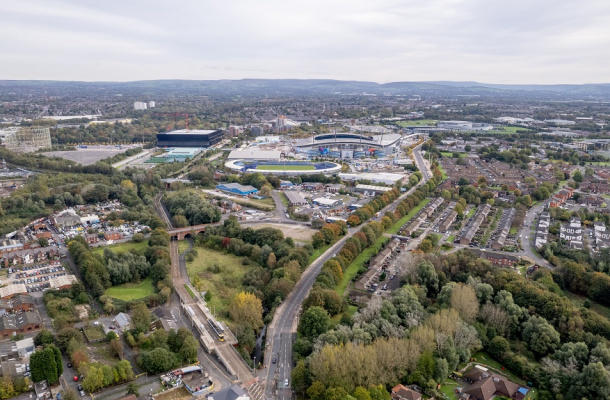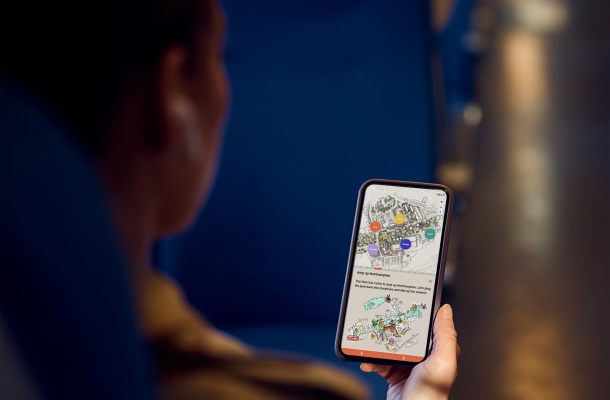Smart. Smarter. Smartest…
Smart watches; smart homes; smart cities. Smart motorways, smarty pants. Only Smarties have the answer. By now you’ll probably be just as inspired as you are fed up of hearing the word ‘smart’. But what is Smart, exactly? What does it mean, to you, for us, or for anyone today?
We’re led to believe we’re living in a brave new world, powered by the Internet of Things and a vision of seamless cloud computing. Everything’s connected. It all exists to simply make life easier.
In reality though, we’re not quite there yet – even if some sectors are making substantial progress. The built environment is a case in point. At Deetu, we watched the drivers for change move from cost to efficiency: not ‘what’s the price?’, but, ‘how green will it be, how will it interact with its environment?’ And more recently we’re being asked, “what else can we realise, what can we offer this asset’s occupants or users?” – which is an important step-change in our clients’ thinking.
The aspiration for an improved user or occupier experience (unlike the drivers before it), is something that comes not from a business’s desire for commercial success, but from the expectations of the people who’ll occupy or use the asset, be it a building, road, or city. This tells us it’s the end-consumers who are the true adopters and advocates of smart technologies, rather than the businesses delivering intelligent tools.
People are leading the revolution. At home, they’ve warmed to the convenience of sensor-driven technologies. They’re happy, talking to inanimate objects and getting responses. They’re not worried about being hyper-connected or having their movements tracked: they expect an improved quality of life and want greater convenience, and if they can have that at home then why can’t they have it everywhere?
More generally though – within the ‘common’ built environment – reactions to this new driver are still too slow. We’re still battling the idea that construction is a numbers game. ROI is a calculation: it’s based on materials, time, bricks and mortar – simple costs. It is much, much harder to quantify what the return on investment may be from end users’ experiences, because you can’t weigh those. They’re hard to measure subjectively. And – worse still – the perceived value can even vary from ‘unit’ to individual ‘unit’.
However. There’s something worth considering here that may change the way we’re working today. At the moment, when people follow instructions correctly, experiental outcomes still depend on binary, sensor-driven technologies. “If I do this, it will do that.” On versus off, get what you want. Even apps are binary – type, touch, tap – and the outcome is predictable (usually).
Now, step back for a moment. It works, but what we have here is the promise of an interconnected world that’s devoid of flexible, almost tactile interaction: the very data needed to give consumers’ experiences some measurable shape or depth and provide meaningful, comparable measurements.
Today, smart ‘anything’ can make a decision that will improve our lives, but those decisions are based on instructions, not options. Is that really the limit of our aspiration for smart? No. We think there’s more to it than that. None of these secular, independent, built assets can make choices without more input, in the same way that we can’t make fully informed decisions from a limited set of factors.
- A truly smart asset will need access to a wider ecosystem, more data, a more meaningful understanding of its own contextual environment – and geospatial factors will play a large part in the flow of information informing those decisions and improving the customer experience.
- A truly smart asset will need to know where something’s happening, as well as what is changing; it will need data so that it can calculate the impact and effects on other factors be those in its remit, environment, workflow or associated operations.
This fully integrated utopia (or nightmare, depending on your view) is still some way off, which may be a blessing in disguise. Why? Because it looks as though ‘prosumers’ will be our next clients: people who both produce and consume data at an exponential rate. You think we’re dealing with Big Data today? Brace yourselves for tomorrow: we’re going to need a bigger database.
The construction industry seems to have grasped the nettle and the good news is we’re seeing great progress, especially among forward-thinking clients. The built environment is starting to work holistically with us from the outset, but city planners, engineers and decision-makers of the not-so-distant future will have a whole new set of live and accurate data on which to base their decisions – and that means the adoption of geospatial intelligence needs to be faster and more immersive, sector- and industry-wide. A smart world will exist sooner than we think, and its success will depend on smart choices by smart people.








